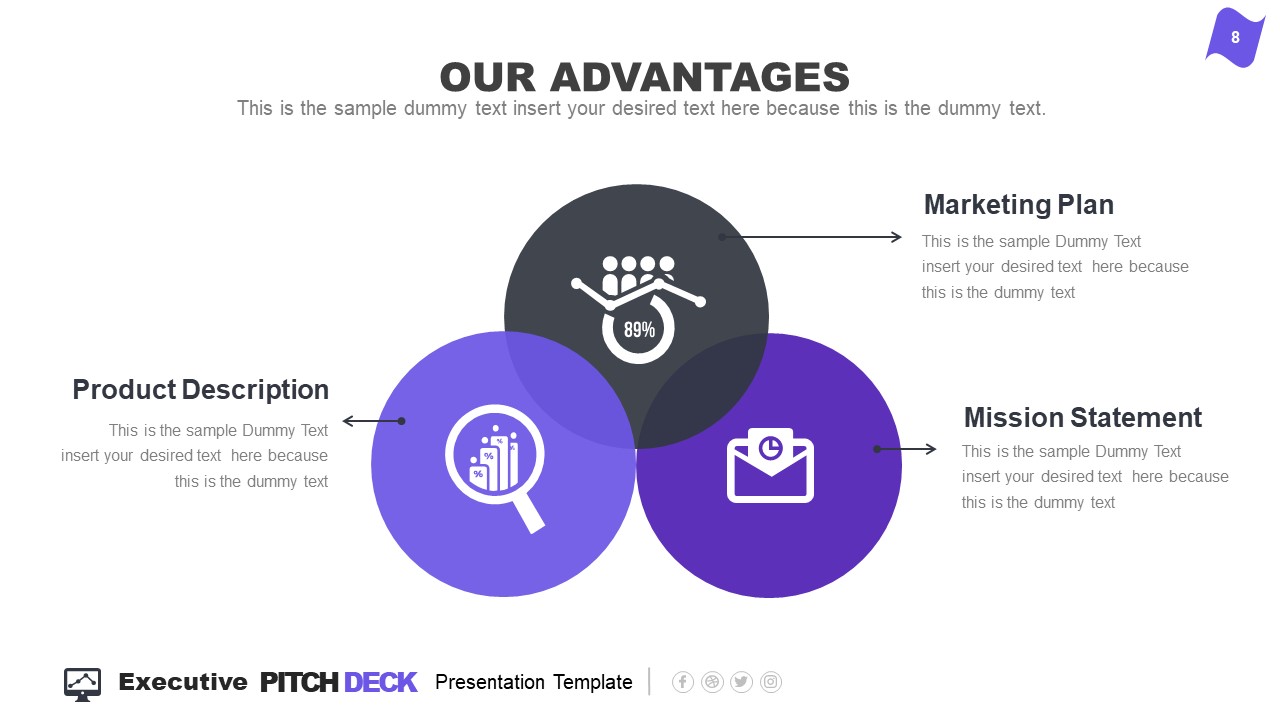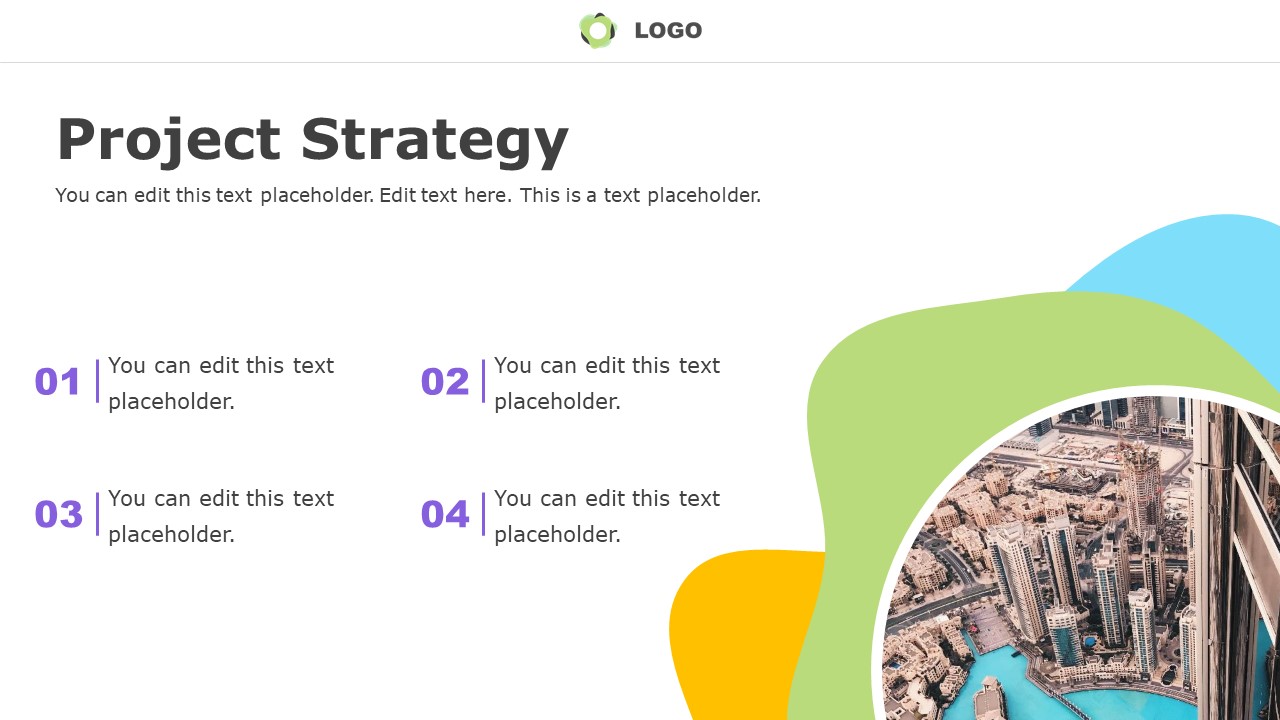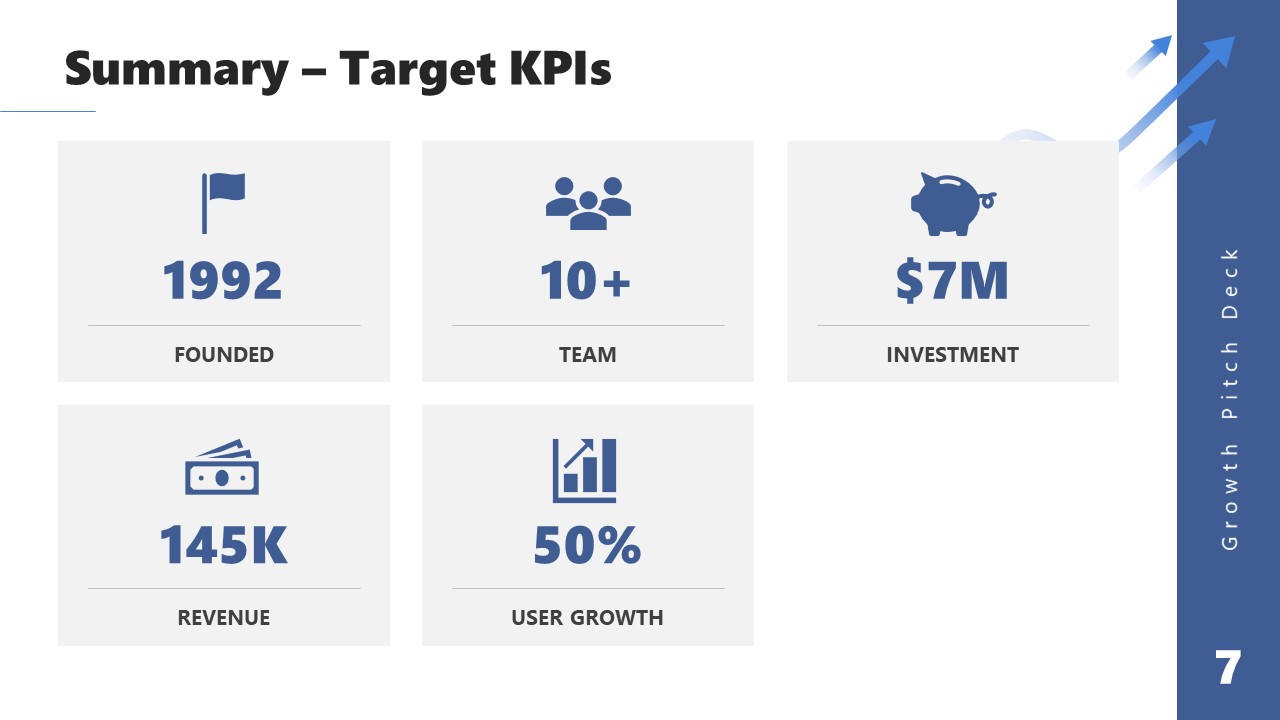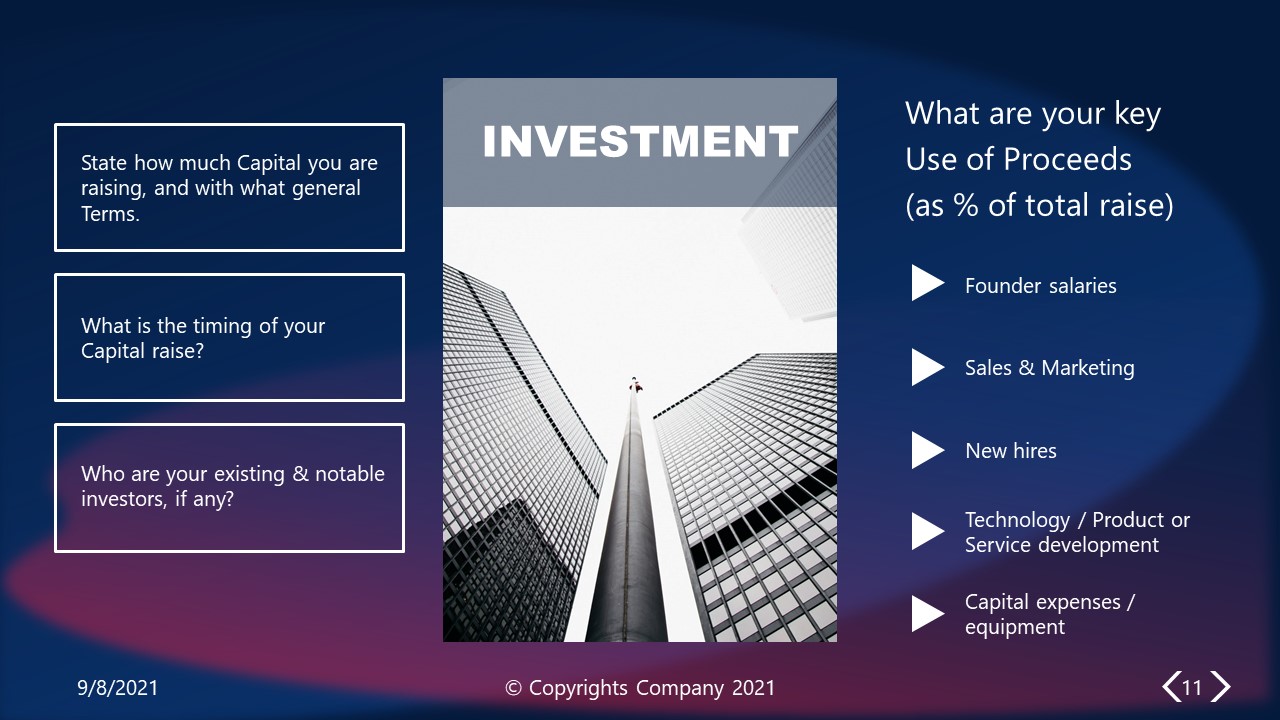
Do you have a bright business idea that you want to get off your vision board? “Just do it” – a famous shoe company would advise. However, it doesn’t mean you should stubbornly take the plunge alone. To turn your visionary concept into a thriving business, you need more than an innovative idea and a passion for success. You need to gather a strong support system to back you up, which begins with a business pitch.
A business pitch can open many doors, whether you want to attract investors, secure partnerships, or gain customers. It’s your opportunity to communicate your vision, passion, and the potential of your idea.
If you are a budding entrepreneur, read on as we delve into the nitty-gritty of creating a winning business pitch.
Table of Contents
- What Is a Business Pitch?
- Components of a Business Pitch
- Types of Business Pitch Techniques
- How to Create and Present a Business Pitch
- Conclusion
What Is a Business Pitch?
A business pitch is a persuasive presentation that outlines the critical elements of a business idea, product, or service to an audience. It is used in various contexts, including:
- Seeking funding from investors
- Attracting potential customers or clients
- Securing business partners or collaborators
That being said, a business pitch is not limited to startups. Established companies often use business pitches to present and gain buy-in for new projects, product ideas, or process improvements within their organizations since they acknowledge the difference between a business pitch and a presentation. A quote by Peter Coughter in “The Art of the Pitch: Persuasion and Presentation Skills that Win Business” summarizes the concept in very clear terms:
“The secret to selling great work is to sell the idea of the work before you sell the work.”
In other words, a business pitch is any effort to convince someone to support or back an idea about a business.
Components of a Business Pitch
The elements to include in pitching correlate to the type of business pitch you deliver.
Investor Pitch
Investors are typically interested in knowing how you would generate income for them, so your presentation should prove a return on investment (ROI) in pouring resources into your business proposition. Your pitch should encompass your business plan, providing salient insights into your:
- Market Opportunity
- Competitive landscape
- Business model
- Financial projections
Sales Pitch
Customers won’t care much about your plans for the next 5 years. What would they want from you is something that will fulfill the specific need or desire they have at the moment. A sales pitch will cover:
- Value proposition
- Competitive advantage
- Social proof
- Call to action
Internal Pitch
The purpose of an internal pitch is to suggest process improvements or propose new projects within an organization. This type of business pitch can lead to the development of innovative ideas, which is why some companies organize internal pitch events, allowing employees to share their ideas for ways to improve their organization. Internal pitches would typically answer the following questions:
- What is the problem or opportunity?
- What is the solution or idea?
- Why is it important?
- What are the resources needed?
- How will it be implemented?
Types of Business Pitch Techniques
Not all your audience members might be able to sit in for a 30-minute-long pitch or attend in-person presentations, so you must tailor your pitches according to the scenario. Here are some business pitch techniques that you can use to convey your ideas effectively.
1. Elevator Pitch
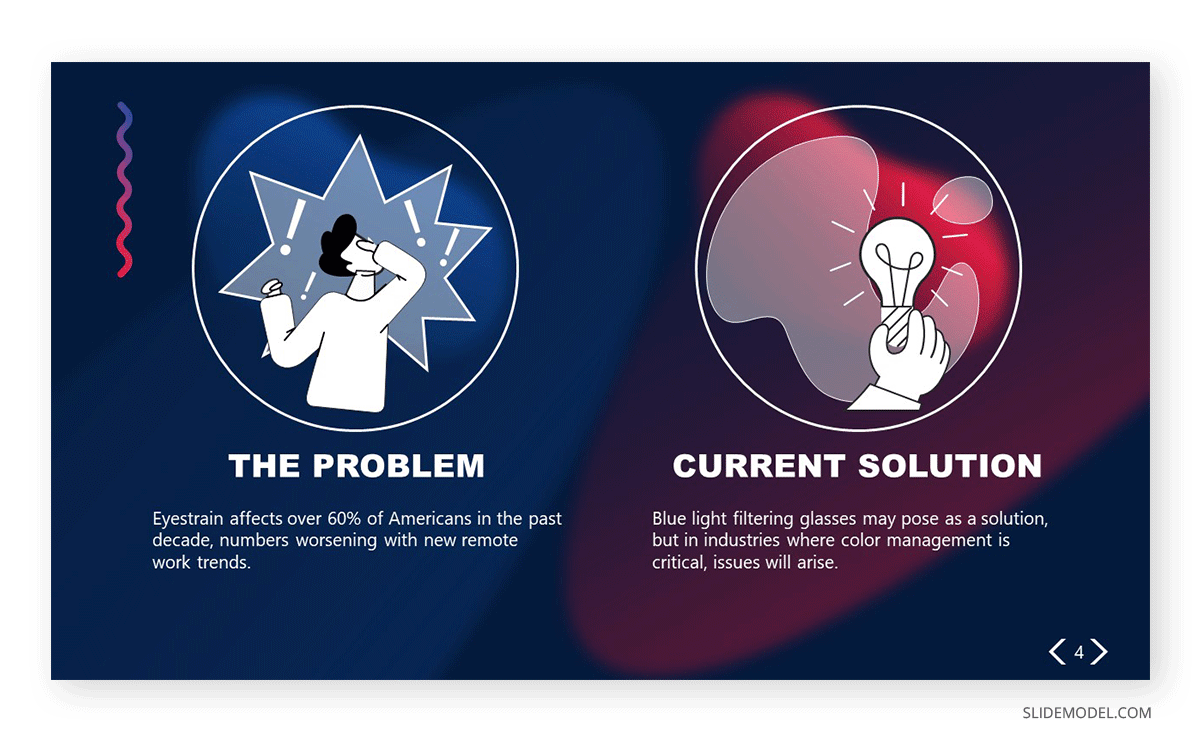
Business pitches can happen anytime and anywhere – over coffee, in a subway, or even in a lift. This is the idea behind an elevator pitch, a very brief pitch (usually 30 seconds) that succinctly conveys the essence of your idea. It’s designed to grab attention quickly and provide a high-level overview of your proposition.
Of course, a few seconds to a minute might not be enough to gain buy-in, but it can be a starting point to get your prospects to want to know more and agree to a follow-up presentation.
2. 10/20/30 Presentation
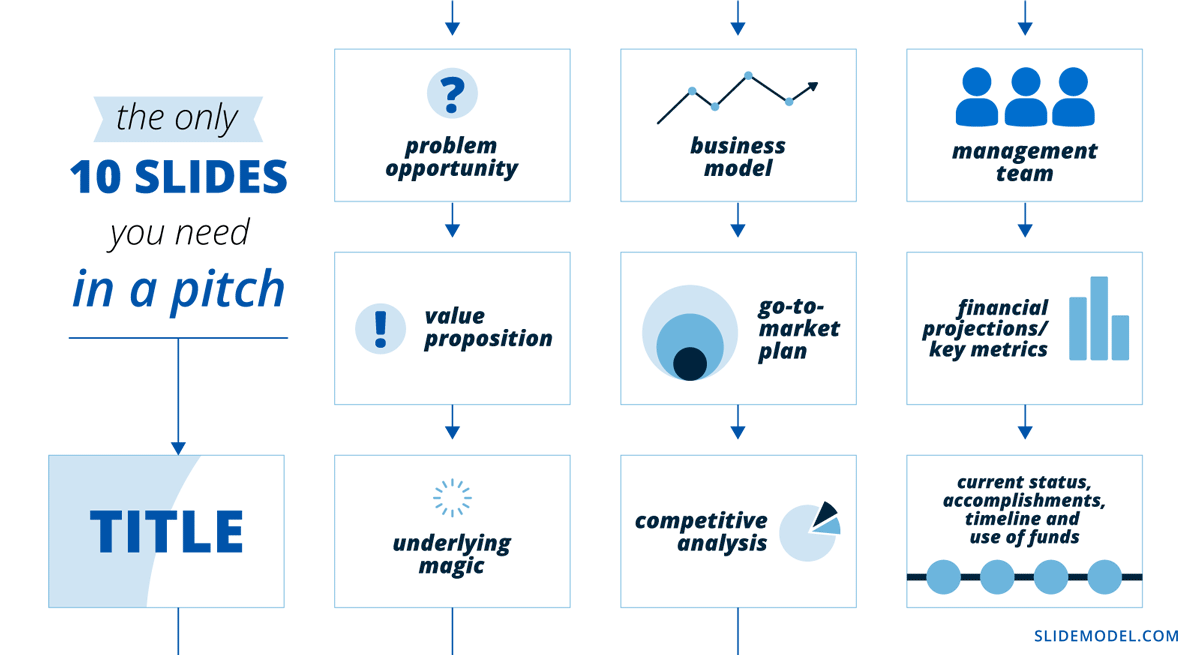
We can think of the 10/20/30 presentation as the expanded version of the elevator pitch. This format extends the duration and depth of the pitch while maintaining a focus on brevity and clarity. The idea is to limit your presentation to 10 slides, a maximum of 20 minutes for delivery, and at least a 30-point font size in the pitch deck.
The 10/20/30 rule in delivering a business pitch emphasizes prioritizing the most critical content and avoiding overwhelming the audience with excessive details.
3. The Pecha Kucha Technique
You will often encounter the Pecha Kucha technique in storytelling events, but you can also incorporate its elements in your pitches. In a traditional Pecha Kucha presentation, 20 slides are displayed for 20 seconds, resulting in a total presentation time of 6 minutes and 40 seconds. This technique is most effective during pitch competitions, where you must present your business ideas within a fixed time limit.
4. Product Demo
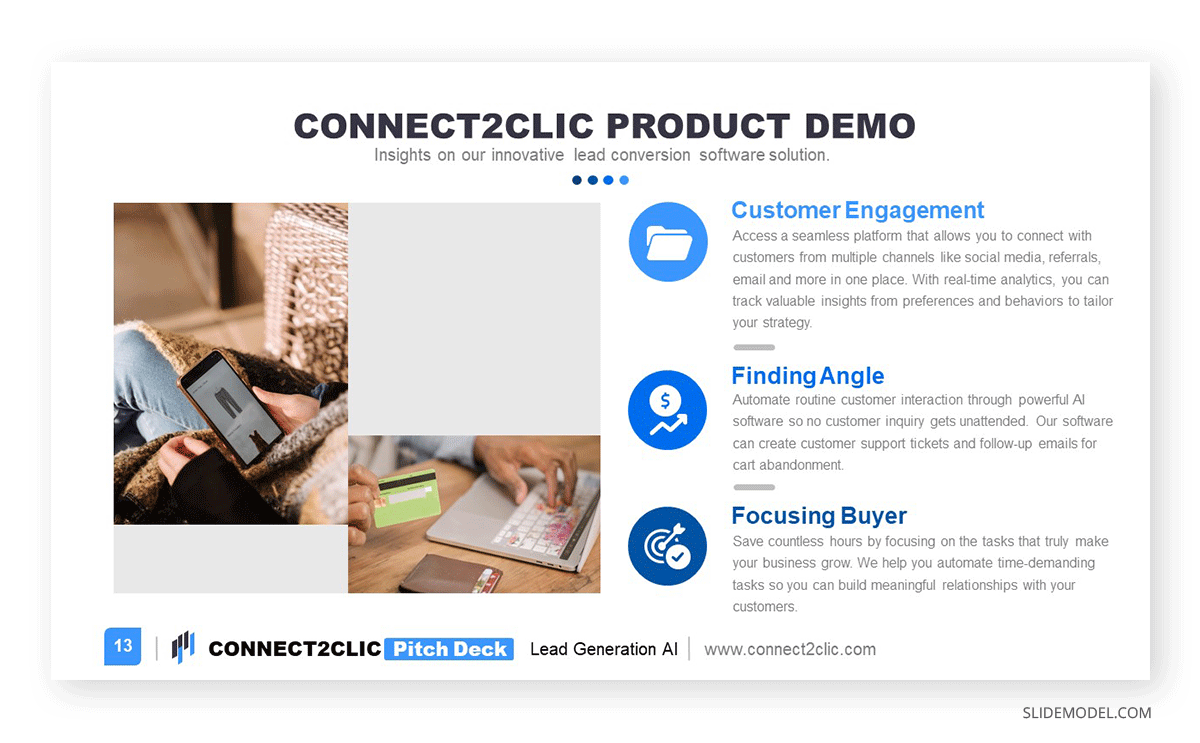
Demonstrations, or demos, are particularly valuable when you have a tangible product, software application, or service to pitch to the public. For example, you will frequently see consumer electronic companies use demonstrations to introduce new products, like Apple introducing their iPhones at WWDC.
5. Audio-Visual Pitch
Ventures with video pitches can double their valuations. That’s the finding of a research by Elsevier. You will often see individual fundraisers on crowdfunding websites accompanied by a video pitch. This technique helps the audience put a face on the campaign and create a stronger connection between the fundraiser and the audience.
A video pitch can be as simple as you, the presenter, speaking to a webcam. You may also upload a minimum viable product (MVP) video to showcase its functionality and benefits to potential backers before production.
A textbook example of an audio-visual pitch is the explainer video of Dropbox, where its founder, Drew Houston, demonstrated the feature of the Dropbox prototype. This video helped the company gain attention and secure initial funding.
6. Customer Testimonial Pitch
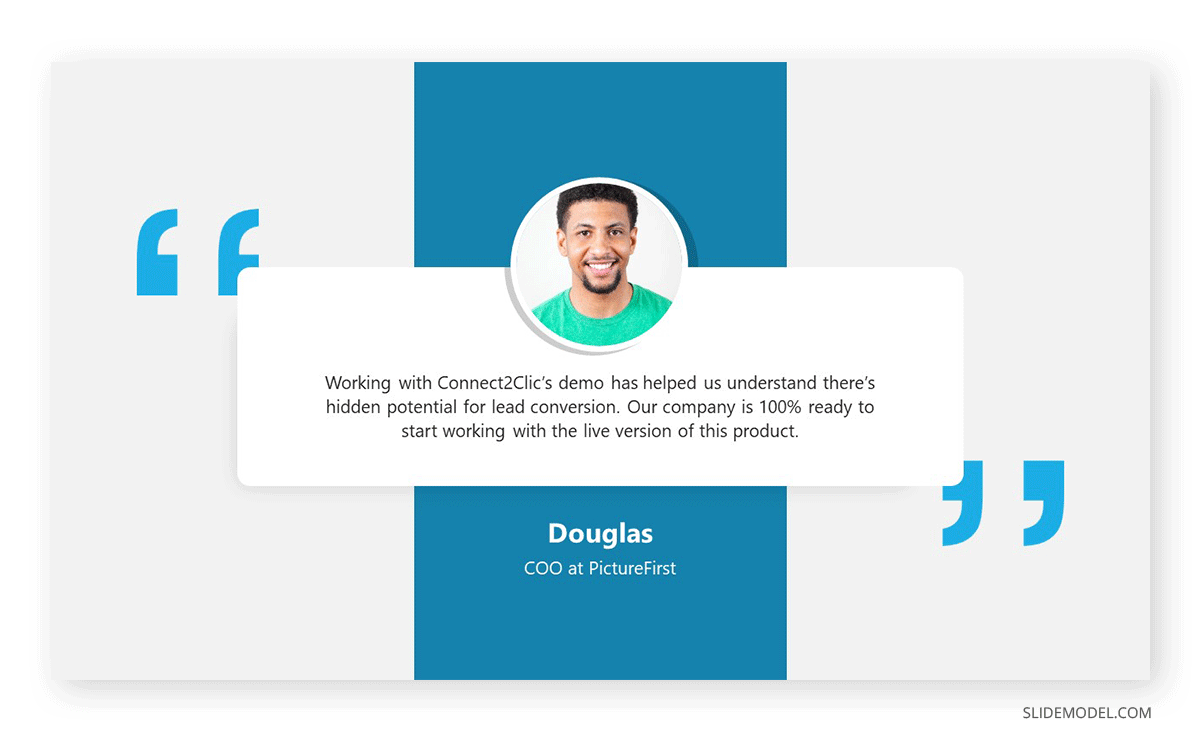
The most convincing pitch comes from your most loyal customers. When people speak positively about your product or service, it carries significant weight with potential customers and investors. Testimonials from real customers provide social proof and serve as independent, third-party endorsements of your product or service, which can be more trusted than claims made by the business itself.
Customer testimonials come in different formats: video, online reviews, email, surveys, etc.
How to Create and Present a Business Pitch

1. Know who you’re pitching to
This may seem an overworked phrase, but knowing who you are presenting to cannot be overstated, especially in an event as crucial as a business pitch. So, ask yourself during the planning stage: Am I pitching to potential investors, customers, partners, or internal stakeholders?
When you are familiar with your audience, you can effectively tailor your pitch to their specific needs, choose the right approach, and, in effect, improve your chances of success.
For example, a founder scheduled to pitch their health and fitness app to a group of angel investors should primarily discuss the business’s financial viability. On the other hand, they should focus on the app’s benefits if they have to pitch to the potential users.
2. Tie it with a story
While data, facts, and figures provide the foundation for your pitch, the emotional appeal often seals the deal. A study suggests that 90 percent of our decisions are guided by emotions, with logic used to justify those decisions. One way of tapping into your audience’s emotions is by telling a personal story.
A well-crafted narrative can leave a lasting impression on the audience. When you infuse your pitch with compelling stories, you add authenticity to your presentation and forge a connection with your listeners. That said, there is a right way to use personal stories. A very simple structure you can follow is:
Problem + Solution + Outcome
Here’s a hypothetical example of how storytelling can be used during a pitch:
Company Name: SwimAway
Company Description: SwimAway is an eco-friendly swimwear brand that creates stylish, sustainable swimwear made entirely from recycled plastics.
The Pitch:
“I was in Phuket, Thailand, last July for a freediving session when our group encountered a heartbreaking scene. We faced a sea turtle struggling because of a plastic straw stuck in its nostril. Thankfully, we removed that plastic straw and set the turtle free.
But this encounter reminded me of the sad trend worldwide – plastic pollution killing marine life. I knew I could do something, so I founded my swimwear brand called SwimAway as a commitment to our oceans.
We craft our swimwear entirely from recycled ocean plastics. We partnered with organizations dedicated to cleaning our oceans, collecting plastic waste, and transforming it into high-quality fabric.
When you wear SwimAway, you’re not just wearing swimwear; you become part of a movement.”
3. Mention your Successes
If you are a fan of Shark Tank, a U.S. reality show where entrepreneurs present their business ideas, you’ll notice one question arises every time: how much sales were you able to make so far? That’s because showcasing your successes, not limited to your sales revenue, is critical to many business pitches. Your successes, or their lack, may help people decide whether to support you.
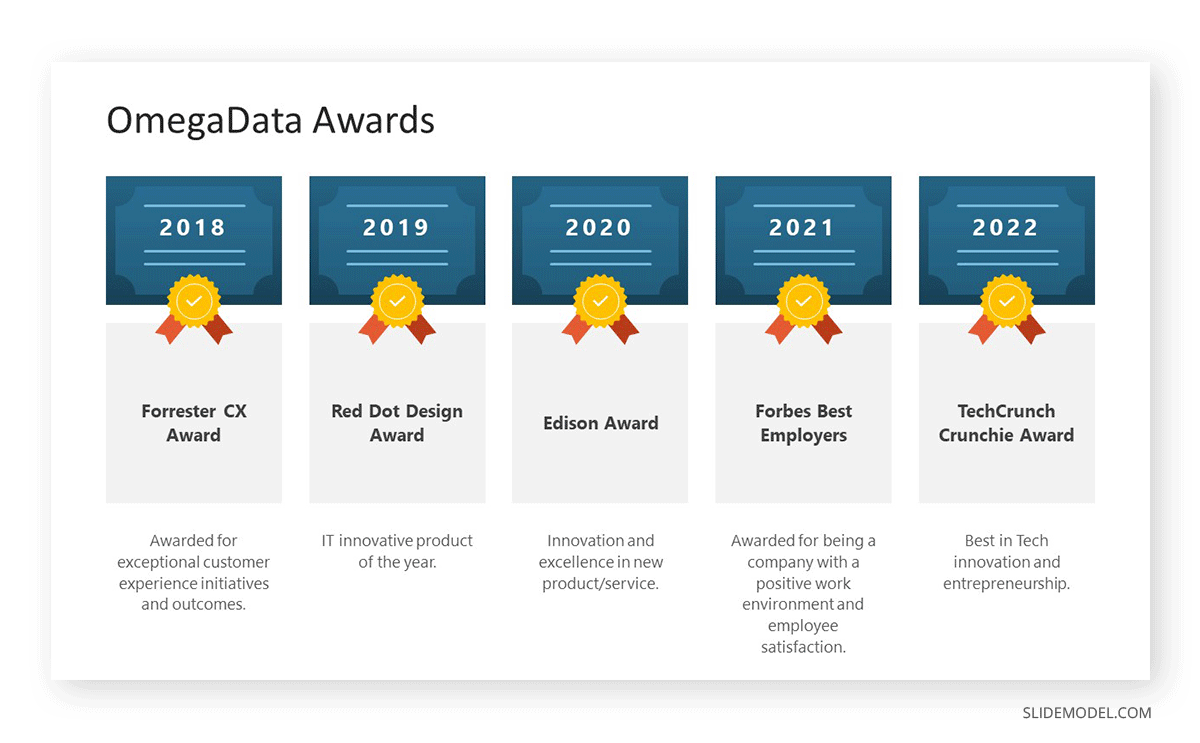
For example, in a sales pitch, dedicating a slide to highlight the awards and commendations your offerings have may reinforce the credibility of your brand.
4. Prepare for the Difficult Questions
No matter how well you think you delivered a pitch, it’s likely that you will still end up facing tough questions. Investors or customers ask questions to test your credibility and understand your plans.
You may anticipate common questions like inquiries about competition, scalability, and revenue projections. However, the best way to prepare for the Q&A is to know the inside out of your business. When you know your pitch by heart, backing up your answers with data and analyses will be second nature.
5. Mix and Match Business Pitch Techniques
Mixing and matching different business pitch techniques can make your presentation more engaging and persuasive. By incorporating various approaches, you can cater to different aspects of your audience’s cognitive and emotional processes, ensuring that your message resonates effectively.
For example, combining a product demo with customer testimonials can create a dynamic and persuasive pitch that not only showcases the functionality of your offering but also validates its effectiveness through real customer experiences.
6. Prepare a Pitch Deck

Preparing a pitch deck is distinct from creating the pitch itself, although the two are closely related. A pitch deck involves structuring slides that cover key content and information you want to convey. This activity involves compiling your financial projections, market size, growth rates, and more using graphics and images with a consistent visual theme.
Depending on your budget, you may hire a pitch deck designer or download and use editable pitch deck templates online.
7. Practice, Practice, Practice
The best way to perfect your pitch delivery is to practice and practice again. The more you practice, the more comfortable and confident you’ll become with your presentation.
Record yourself delivering the pitch using video or do a mock delivery in front of a mirror. Keep your posture and timing in check. Practice seamlessly transitioning between your speech and visuals. And if possible, seek feedback from your peers or mentors.
Business Pitch Examples
Conclusion
We’ve explored the essential elements and strategies for creating a successful business pitch. Throughout this process, one golden rule is to tailor your business pitch to your audience. When you can select the right people to present your idea to and align your pitch to their needs, you are well on your way to transforming your vision into a reality!
